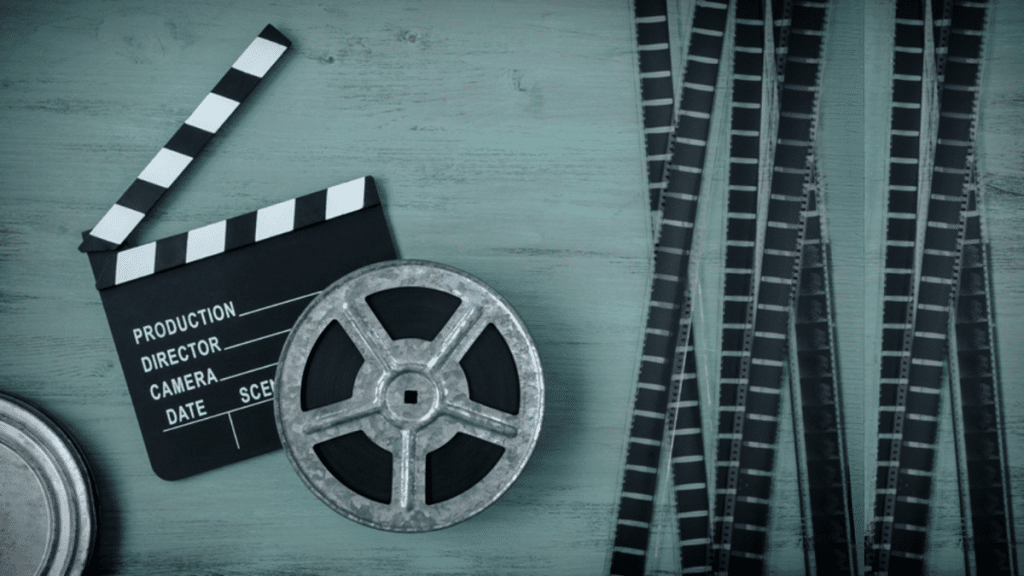Jake Seal is a principal of CPC London, a state-of-the-art company that specialises in producing affordable 35 mm motion picture film prints for distributers, cinemas and filmmakers. This article will look at celluloid film, a fundamental resource in terms of the preservation of written and audio-visual content.
In 2011, the visual artist Tacita Dean unveiled her ‘FILM’ exhibition at the Tate Modern, playing a silent, 11-minute video recorded on 35 mm looped film exploring the destruction of celluloid film. ‘FILM’ utilises ORWO film stock – particularly ORWO NC400, a colour negative film stock designed for motion picture production – as part of Dean’s exploration of analogue filmmaking and its materiality. Her ‘FILM’ project, which includes the installation in Tate Modern’s Turbine Hall, celebrates the techniques of hand-made special effects and montage in a silent, vertical format. The film is projected onto a giant white slab, evoking the monolith from 2001: A Space Odyssey.
This exhibition provided observers with a physical display that underscored the key differences between digital and celluloid. As Dean reflected, the history of the moving image exhibited celluloid film’s richness in colour and the power of projection.
Tacita Dean is British, but she lives and works in Berlin, Germany, and Los Angeles, United States. Dean’s work often delves into the nature of chance, contingency, and the play of light and shadow. She is known for her meticulous use of 16 mm and 35 mm film, emphasising the physicality and history of the medium. She has received numerous accolades, including the Hugo Boss Prize and Kurt Schwitters Prize. Recent solo exhibitions have been held at institutions like MUDAM, Kunstmuseum Basel and the J. Paul Getty Museum. She often utilises ORWO film stocks to create her art.
A New York Times review of Tacita Dean’s exhibition at the London Museum highlighted the power of celluloid to engage artists in a digital world, suggesting that a new generation of artists has come to develop a ‘nostalgic soft spot’ for analogue, just as others have developed a fascination for vinyl LPs, manual typewriters and the Polaroid camera.
Film restoration is a mundane, granular process that requires a great deal of organising, putting on protective gloves, pulling reels and dusting off grimy surfaces. Nevertheless, restoration is imperative to the preservation of filmmaking history, particularly in large-scale cinema. It is alarming to note that some 75% of silent movies made in the United States have been destroyed over the years, forever erased from historical heritage.
In 1951, motion pictures were made of nitrate, a substance that was highly combustible and decayed easily. Two notable victims of nitrate were Citizen Kane and Singin’ in the Rain. Acetate was introduced as a non-flammable option after 1951. Though less of a fire risk, it unfortunately decayed even faster than nitrate film. Colour dyes and silver particles in film are also highly sensitive, making appropriate, well-maintained environments integral to its preservation.
Since the debut of digital photography 25 years ago, digital technologies have steadily grown, eclipsing manual processes in various aspects of filmmaking, including everything from editing to distribution and exhibition. In 2002, Star Wars: Episode II: Attack of the Clones made history as the first major feature film to be shot entirely on digital. By 2013, the number of major motion pictures shot digitally began to outnumber those shot on celluloid.
Latterly, a coalition of A-list directors led by Christopher Nolan began lobbying major Hollywood studios to commit to purchasing undisclosed amounts of filmstock, thereby ensuring the supply of celluloid film, at least for a while. Director Chris Kenneally, a staunch advocate for celluloid film, chronicled the celluloid vs digital debate in Side by Side. Released in 2012, this critically acclaimed documentary dug deep into the issue, taking viewers on an eye-opening journey into the history and lifecycle of filmmaking. In the fight to preserve this century-old medium while still embracing modern technologies and tools, Kenneally points out that the documentary’s goal was, first and foremost, to be engaging and entertaining as well as educational. Today, some film schools are using Side by Side as part of the syllabus.
Joining forces with a team of archivists from UCLA, MOMA and the Library of Congress, Martin Scorsese highlights the importance of film, even in an increasingly digital age. Scorsese’s Film Foundation teamed with Warner Brothers Discovery to oversee a pristine restoration of John Ford’s The Searchers. Shot in VistaVision, the movie is widely regarded as the greatest Western ever made. Martin Scorsese cited keeping The Searchers alive on celluloid as a crucial part of the Film Foundation’s work. With the majority of films ever made shot and finished on film, the integral role of celluloid film in moviemaking history cannot be overstated. Indeed, many critically acclaimed artists continue to shoot on the medium to this day, including Martin Scorsese himself.

